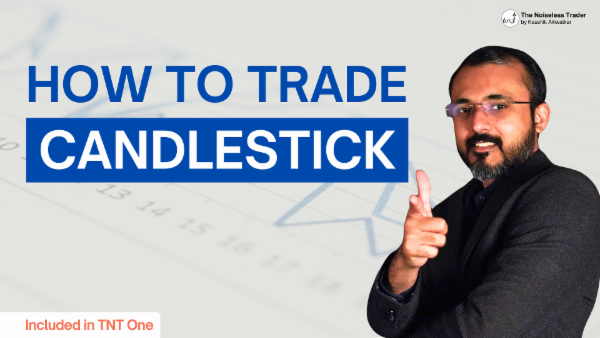- The Noiseless Trader's Newsletter
- Posts
- Journey of a trader that no one talks about🤫🤫
Journey of a trader that no one talks about🤫🤫
4 Phases every trader goes through
Today in less than 10 minutes:
1. Learn the phases a trader goes through in his journey
2. Identify your current phase and understand what to do next

If someone forwarded this, join 1000+ others to get actionable trading & investing strategies in your mailbox every other weekday.
The career of a trader, although attractive, is a difficult one. In his journey, the trader has many realizations. The trader goes through various phases. In this newsletter, we discuss these phases.
I have gone through these phases, and I hope you can identify your current phase and understand the next phase of your journey as a trader.
Phase 1: Hunting for strategies
One of the common reasons someone starts trading is because they may have overheard how someone else made profits in a short-term. Social media and other online media could also be a reason for someone getting attracted towards trading. The low barrier to entry makes it easy for someone to start trading as well. Although this is not bad, the trader lacks basic knowledge about the markets. Instead of learning the basics and foundational blocks of the markets, they look for strategies that have worked for others. The issue with the traders in this phase is that they lack a proper understanding of the strategy, the indicators, charts, and other tools used in the strategy.
Trading should be looked at as a career rather than a gamble. This perspective is important. For a person to sustain or do better in a career, they require a strong knowledge foundation. Moreover, it requires a realization on the part of the trader that they may not have this strong foundation. Hunting for strategies is useless unless the trader truly understands the logic behind the creation of the strategy.
To understand a trading strategy, the trader needs to understand the component of the strategy. This leads the trader to the second phase.
Phase 2: Knowledge Seeking
The trader in this phase come to the realization that moving from one strategy to another is simply a waste of time. The trader then starts to learn the basics of the markets. It is never too late to invest in knowledge.
They learn different charting methods, price patterns, different indicators and their calculations. Major sources of this knowledge are blogs, YouTube videos, books, or curated courses created by someone with experience. Although they don’t learn strategies, they build a core understanding of the markets. This makes them capable enough to create their own strategies. They realize that the right time to implement whatever they have learnt comes only after deep understanding.
Phase 3: Building Trading edge
The trader in this phase realizes that having a strategy is not enough, they realize that no strategy will ever be 100% accurate upon implementation. To improve the accuracy, they need to be selective about the stocks.
Self actualization that the trade setup should have 4 important aspects:
What to Buy?
When to Buy?
How much to Buy?
And when to Sell?
For example, if a trader spots a triangle pattern on a stock and the pattern doesn’t work, it could be possible that stock itself could be the wrong choice rather than the pattern. To improve the accuracy, the trader now focuses on the science of stock selection. Trading relatively outperforming stocks can increase the accuracy of the strategy.
Now that the knowledge of charts, its patterns and stock selection is acquired, the trader realizes that holding a stock is all about psychology.
Phase 4: Psychology
Psychology is related to the trader’s ability to control his emotions. Psychology is also about having the discipline of waiting for a trade when there is no entry as per the strategy. It is also about discipline of emotions when the trader is in the trade, and he has to hold it till the target is reached. Building this conviction about the strategy and having the patience to wait for the entry comes from experience, observation, and practice. It is important to avoid the inside noise (emotions) and the outside noise (influence).
Going through these phases is inevitable. But it is worth it. The first two phases are important for any trader. Each phase takes its own time. Identify the phase you are in and introspect as to what you can do to improve yourself as a trader.
If you are someone who is just starting out in the market and want to learn the basics of the market, do check out this course based on Candlestick charts. I have explained various chart patterns and the indicators I use for my analysis.
Register and take your first step in your journey as a trader.


